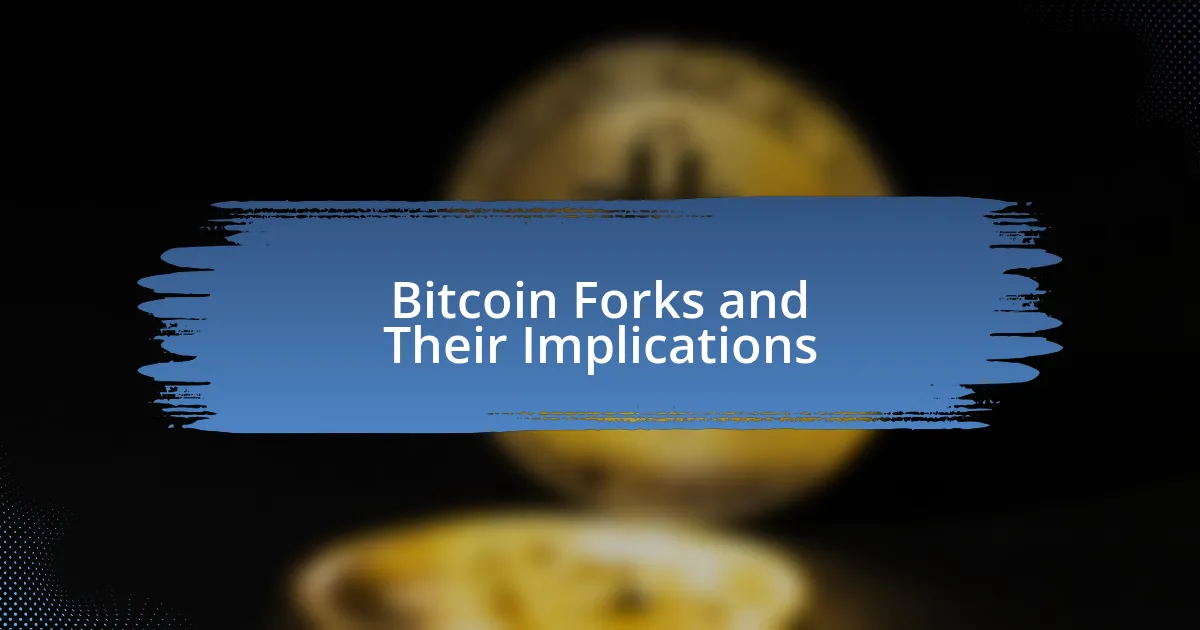
Start of Bitcoin Forks and Their Implications Quiz
1. What is a Bitcoin fork?
- A Bitcoin fork involves creating physical copies of Bitcoin for trading purposes.
- A Bitcoin fork is a new type of Bitcoin that does not change anything.
- A Bitcoin fork is simply a temporary shutdown of the Bitcoin network.
- A Bitcoin fork occurs when new code is “branched” out of Bitcoin’s source code in order to slightly change the rules of the Bitcoin network.
2. What are the two main types of Bitcoin forks?
- Mining pools and exchanges
- Digital signatures and hashing
- Block sizes and transaction speeds
- Soft forks and hard forks
3. What happens during a soft fork?
- A soft fork creates new blocks that weren`t possible before.
- A soft fork makes all transactions invalid and requires all nodes to update.
- A soft fork is an upgrade that increases block size and speed.
- A soft fork makes previously valid blocks or transactions invalid, and it is backwards-compatible.
4. What happens during a hard fork?
- A hard fork improves speed and efficiency of transactions.
- A hard fork requires all users to accept new rules immediately.
- A hard fork creates a single version of the blockchain for everyone.
- A hard fork makes previously invalid blocks or transactions valid and is backwards-incompatible.
5. What is the purpose of increasing block size in Bitcoin?
- To increase the transaction rate
- To reduce the mining difficulty
- To lower transaction fees
- To enhance block security
6. Which Bitcoin fork increased the block size to 8 megabytes?
- Bitcoin XT
- Bitcoin Diamond
- Bitcoin Classic
- Bitcoin Gold
7. Which Bitcoin fork increased the block size to 2 megabytes?
- Bitcoin XT
- Bitcoin Gold
- Bitcoin Cash
- Bitcoin Classic
8. When was Bitcoin XT created?
- Mid 2016
- Late 2014
- Early 2018
- Early 2015
9. When was Bitcoin Classic created?
- Early 2016
- Mid 2017
- Late 2015
- January 2018
10. What was the goal of Bitcoin Gold?
- To change the consensus algorithm entirely
- To increase transaction fees significantly
- To restore mining with basic GPU miners
- To lower the total supply of Bitcoin
11. When was Bitcoin Gold created?
- November 2017
- January 2018
- August 2017
- October 2017
12. What was the purpose of Bitcoin Cash?
- To avoid the upgrades brought about by SegWit and increase block size
- To introduce faster transaction times using pre-signed transactions
- To create a new mining algorithm for Bitcoin
- To reduce transaction fees and promote scalability
13. When was Bitcoin Cash created?
- August 2017
- September 2018
- July 2016
- February 2019
14. What is Segregated Witness (SegWit)?
- A new cryptocurrency introduced to replace Bitcoin.
- A method to bypass the Bitcoin transaction fees completely.
- A software upgrade that aimed to reduce transaction size and malleability.
- A program for mining Bitcoin more efficiently.
15. When was SegWit implemented?
- August 2017
- May 2015
- January 2018
- September 2016
16. What is the difference between SegWit and Bitcoin Cash?
- SegWit allows for larger block sizes, while Bitcoin Cash decreases them.
- SegWit is a cryptocurrency, while Bitcoin Cash is a protocol.
- SegWit is a software upgrade, while Bitcoin Cash is a hard fork.
- SegWit increases transaction speed, while Bitcoin Cash does not.
17. Which fork resulted in the creation of new coins?
- Soft forks modify existing coins.
- Merges combine two cryptocurrencies.
- Hard forks result in the creation of new coins.
- Upgrades change transaction rates.
18. How are new coins distributed during a hard fork?
- Only people who actively mined Bitcoin at the time receive new coins.
- Each person that held Bitcoins before the fork gets new “forkcoins” equal to their Bitcoin holdings at the time of the fork.
- New coins go exclusively to those who exchanged their Bitcoins just before the fork.
- New coins are distributed randomly among all Bitcoin wallets.
19. What are forkcoins?
- Tokens for staking in wallets
- Coins made for trading in markets
- Rewards for mining Bitcoin
- New coins created during a hard fork
20. How can forkcoins be claimed?
- Forkcoins can be claimed automatically after every transaction.
- Forkcoins can be claimed exclusively through cryptocurrency exchanges.
- Forkcoins can be claimed only during a full moon.
- Forkcoins can be claimed freely using DIY methods or by using services that may charge considerable fees.
21. What is the purpose of Bitcoin Diamond?
- To decrease the transaction fees on every transaction
- To eliminate the use of Bitcoin networks entirely
- To enhance the anonymity of transactions
- To increase the block size and improve transaction speed
22. When was Bitcoin Diamond created?
- September 2018
- November 2017
- December 2018
- January 2018
23. What is the purpose of Bitcoin Atom?
- To decrease the block size and limit transactions on the network.
- To increase mining rewards and make it easier for miners.
- To create an anonymous cryptocurrency that hides user identities.
- To improve the usability and adoption of Bitcoin by creating a more user-friendly interface.
24. When was Bitcoin Atom created?
- January 2018
- December 2016
- March 2017
- July 2019
25. What is the purpose of Bitcoin Private?
- To create a new currency with no connection to Bitcoin.
- To increase transaction fees for miners.
- To reduce block size for faster transactions.
- To enhance privacy by integrating with the Zcash protocol.
26. When was Bitcoin Private created?
- October 2019
- June 2016
- January 2018
- March 2017
27. What is the purpose of Bitcoin Zeo?
- To focus on enhancing Bitcoin`s mining efficiency
- Not specified in the sources provided
- To create a new platform for decentralized applications
- To lower transaction fees and speed up transfers
28. When was Bitcoin Zeo created?
- September 2018
- June 2019
- October 2017
- March 2018
29. What is the purpose of Bitcoin Post-Quantum?
- To create new Bitcoin forks for developers.
- To decrease Bitcoin transaction fees.
- To increase the maximum block size limit.
- To prevent quantum attacks on Bitcoin transactions.
30. When was Bitcoin Post-Quantum created?
- December 2018
- July 2019
- January 2017
- March 2020

Quiz Successfully Completed!
Congratulations on completing the quiz about Bitcoin forks and their implications! You’ve tested your knowledge and gained insights into a crucial area of cryptocurrency. Understanding these forks is essential for anyone interested in how Bitcoin evolves and affects the market. From hard forks to soft forks, each has its unique characteristics and implications that can impact users and investors alike.
Throughout this quiz, you may have learned about the significance of different forks and their historical context. The dynamics of community consensus, the challenges of governance, and how forks can lead to new coins are pivotal lessons. These concepts not only enhance your understanding of Bitcoin but also empower you with knowledge about the broader cryptocurrency landscape.
To further expand your understanding, we invite you to explore the next section on this page dedicated to ‘Bitcoin Forks and Their Implications.’ This resource offers a deeper dive into the topic, providing detailed explanations and examples. Continue your journey into the world of Bitcoin and enhance your expertise further!

Bitcoin Forks and Their Implications
Understanding Bitcoin Forks
Bitcoin forks occur when there is a divergence in the blockchain protocol, resulting in two separate chains. This can happen through a hard fork or a soft fork. A hard fork results in two incompatible blockchains, while a soft fork remains compatible with the original chain. These forks typically arise due to disagreements within the community regarding the governance of Bitcoin or proposed changes to its protocol. The most notable examples of Bitcoin forks include Bitcoin Cash and Bitcoin SV. Each fork creates a new cryptocurrency with its own features and community, affecting market dynamics.
The Types of Bitcoin Forks
Bitcoin forks are categorized into two main types: hard forks and soft forks. Hard forks introduce changes that are not backward-compatible, leading to a permanent divergence in the blockchain. This means nodes that do not upgrade to the new version cannot interact with the new chain. Soft forks, on the other hand, introduce improvements that are backward-compatible. This allows non-upgraded nodes to remain in sync with the network. Understanding the difference is crucial for investors and developers, as it influences the usability and security of the affected chains.
Market Implications of Bitcoin Forks
Bitcoin forks can significantly impact market behavior and sentiment. When a fork is announced, it often leads to speculation and volatility in both Bitcoin and the new currency’s value. Traders may buy Bitcoin in anticipation of a fork, expecting the new currency to have value post-fork. Additionally, forks can fragment investor focus and capital, leading to changes in liquidity across the multiple chains created. Following a fork, the market capitalization of Bitcoin can also fluctuate, as new investors may prefer one coin over another.
Community and Developer Reactions to Forks
The reactions from the Bitcoin community and its developers to forks can vary widely. Some members support the changes, believing they address limitations in the current protocol. Others oppose forks, viewing them as a threat to Bitcoin’s integrity and stability. Developer involvement can also define forks’ success. Well-coordinated forks with strong developer backing tend to perform better in the market and gain more acceptance. Conversely, poorly supported forks may struggle to gain traction.
The Future of Bitcoin Forks
The future of Bitcoin forks is influenced by ongoing debates about scalability, governance, and user adoption. As technology evolves, there may be a need for new forks to address emerging challenges within the Bitcoin network. Innovations like layer-two solutions (e.g., Lightning Network) might reduce the necessity for forks by providing alternative ways to manage transactions. However, the existence of forks will likely persist, reflecting the diverse perspectives within the cryptocurrency ecosystem.
What are Bitcoin Forks?
Bitcoin forks are changes to the Bitcoin protocol that result in a divergence in the blockchain. They can be classified as soft forks or hard forks. A soft fork is a backward-compatible upgrade, while a hard fork creates a new, incompatible version of the protocol. Hard forks often lead to the creation of new cryptocurrencies, such as Bitcoin Cash, which split from Bitcoin in August 2017.
How do Bitcoin Forks impact the cryptocurrency market?
Bitcoin forks can significantly impact the cryptocurrency market by creating new coins and altering market dynamics. When a hard fork occurs, holders of the original Bitcoin often receive an equal amount of the new cryptocurrency. This can lead to a temporary increase in market volatility, as traders speculate on the new asset’s value. For example, the hard fork of Bitcoin Cash from Bitcoin resulted in a price spike for both currencies immediately following the fork.
Where can Bitcoin users check for upcoming forks?
Bitcoin users can check for upcoming forks on various cryptocurrency news websites and forums. Websites like Bitcoin.org and various cryptocurrency exchanges also provide information about scheduled forks. Community discussions on platforms like Reddit or Bitcointalk are reliable sources for real-time updates and insights about potential forks.
When did the notable Bitcoin forks occur?
Notable Bitcoin forks occurred on several key dates. Bitcoin Cash forked from Bitcoin on August 1, 2017. Bitcoin Gold followed on October 24, 2017. Another significant fork, Bitcoin SV, split from Bitcoin Cash on November 15, 2018. Each of these events had ramifications for the market and the broader Bitcoin ecosystem.
Who initiates Bitcoin Forks?
Bitcoin forks are typically initiated by developers, miners, or community leaders within the Bitcoin ecosystem. These individuals or groups propose changes to the protocol, and if there is sufficient support, a fork may be executed. For instance, the Bitcoin Cash fork was primarily driven by a group of developers who advocated for larger block sizes to increase transaction throughput.


